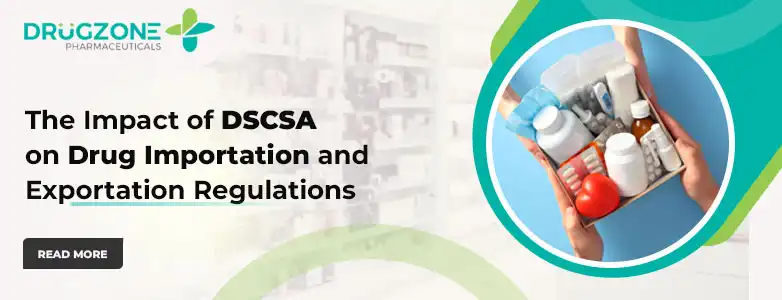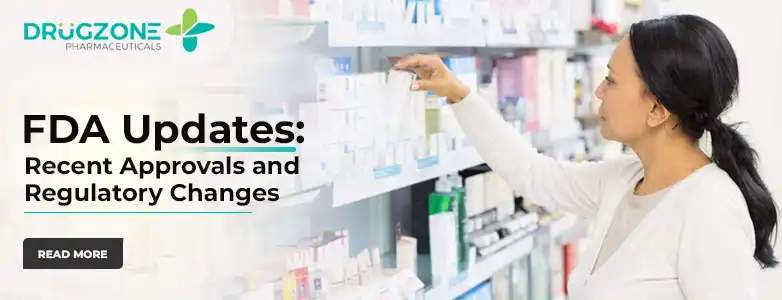
Posted On: May 20, 2025
FDA 483 and Warning Letters: What Pharma Companies Need to Know
Compliance is the foundation of both credibility and patient safety.
Among the many regulatory tools the U.S. Food and Drug Administration (FDA) employs, the Form 483 and the subsequent Warning Letter are the most significant indicators of non-compliance within pharmaceutical manufacturing and supply operations.
Ignoring or mishandling these notices can have severe consequences for anyone, including pharmaceutical drug suppliers, in the pharma value chain.
What Is an FDA Form 483?
An FDA Form 483 is issued to a company at the conclusion of an FDA inspection when investigators observe conditions that may constitute violations of the Food Drug and Cosmetic (FD&C) Act.
While the form itself is not a final determination of non-compliance, it signals critical areas that demand immediate attention. In the case of pharmaceutical drugs suppliers, this can mean issues with warehousing conditions, distribution practices, labeling errors, or even documentation discrepancies.
If not addressed appropriately and in a timely manner, these findings can escalate into formal enforcement actions, including a Warning Letter.
Understanding Warning Letters
A Warning Letter is a public document that explains serious problems the FDA found during an inspection. It’s usually sent when the issues listed in a Form 483 were not fixed properly. The letter means the FDA believes the company is breaking important rules.
After receiving a Warning Letter, a company may face more frequent inspections, shipping delays, or even have products stopped or removed from the market.
Global pharmaceutical drugs suppliers receiving such a letter can suffer serious damage to their reputation. It can lead to broken business relationships, blocked sales in certain countries, and major disruptions in getting medicines to customers.
Top Reasons for Receiving FDA 483s and Warning Letters
Following are the most prominent once -
1. Data Integrity Issues
Data integrity entails making sure all the records and information in a pharma company are complete, accurate, and trustworthy.
When companies falsify data, make unauthorized edits, or don’t keep proper track of changes, it raises serious red flags. Even simple things like handwritten errors or missing timestamps can lead to major compliance issues because the FDA relies on clear and reliable data to ensure patient safety.
2. Inadequate Investigations
When something goes wrong, like a batch failure or deviation from standard procedures, companies are expected to figure out why it happened and how to prevent it from happening again.
But many times, these investigations are rushed or lack depth. The FDA sees this as a big problem because weak investigations can allow the same issues to happen again.
3. Poor Documentation Practices
Clear documentation is essential in the pharmaceutical industry. If records are incomplete, inconsistent, or missing, it’s nearly impossible to prove that procedures were followed correctly. The FDA has a simple rule:
if it wasn’t documented, it didn’t happen. Poor record-keeping not only undermines trust but can also result in Warning Letters and other serious consequences.
4. Substandard Equipment and Facilities
Pharmaceutical products must be manufactured in a clean and controlled environment using properly maintained equipment.
If equipment isn’t calibrated regularly, or if the facility isn’t kept in good condition, it can directly affect product quality. The FDA expects high standards here because even minor lapses can put patients at risk.
5. Training Gaps
People working in pharma need to be well-trained in cGMP and specific procedures related to their roles. When staff aren’t properly trained, they’re more likely to make mistakes, sometimes without even realizing it.
The FDA often finds that errors during manufacturing or documentation are linked back to inadequate training, which makes it a common reason for citations.
Here's What Pharma Companies Should Do
- Run regular internal checks and set clear rules for handling data to avoid problems.
- Use digital tools to manage records and reports so there’s less chance of mistakes or data being changed.
- Train staff often on their specific roles, especially in quality control and following good manufacturing practices.
- If you get a Form 483, reply within 15 working days with a clear plan to fix the issues.
Form 483 Vs Warning Letter: Did You Know?
While a Form 483 is technically not the same as a Warning Letter, it still carries significant weight.
The FDA issues a Form 483 at the end of an inspection to highlight any observed violations of the FD&C Act. It's not an official enforcement action, but it signals areas that the FDA believes need correction.
The language might seem less formal, but it’s a clear warning that something is wrong and must be fixed.
On the other hand, a Warning Letter is more serious. It is issued when the FDA feels the observations in the 483 were not adequately addressed, or when the violations are severe enough to merit formal notice. A Warning Letter can trigger regulatory action, public disclosure, and reputational damage.
That said, even though Form 483 doesn't use the term warning in its title, it often serves as a preliminary warning. Companies that fail to act on it quickly and effectively may soon find themselves facing an actual Warning Letter.
So while the two differ in terminology and formality, the underlying message of a Form 483 is ultimately cautionary!
Stay Inspection-Ready with Drugzone
Navigating the implications of an FDA 483 warning demands precision and proactive compliance.
We, at Drugzone, pride ourselves on maintaining the highest standards in our operations as pharmaceutical drugs suppliers, ensuring our partners remain inspection-ready at all times. With Drugzone, you gain a distributor that understands regulatory nuances and upholds your reputation in the marketplace.
Frequently Asked Questions (FAQs)
Q. How should pharmaceutical drugs suppliers respond to an FDA 483 letter?
They must provide a timely and detailed written response, addressing each observation with corrective action plans.
Q. Can repeated FDA 483 warnings lead to further action against pharmaceutical drugs suppliers?
Yes, ongoing non-compliance can result in product seizures, import bans, or injunctions against the company.
Tags
Latest Posts
-

Federal vs. State Regulations in the U.S. Pharma Industry
-

Top 5 Legal Risks Facing Pharmaceutical Companies in USA
-

The Role of DSCSA in Enhancing Drug Clinical Trials Regulations
-

The Importance of Pharmacovigilance in Wholesale Distribution
-

The Impact of DSCSA on Drug Importation and Exportation Regulations
Similar Posts
-

The Role of DSCSA in Enhancing Drug Clinical Trials Regulations
-

The Impact of DSCSA on Drug Importation and Exportation Regulations
-

PwC Report Highlights Transformative Trends in Pharma for 2025 and Beyond
-

FDA Updates: Recent Approvals and Regulatory Changes
-

How DSCSA Affects Pharmaceutical Data Management and Record-Keeping
